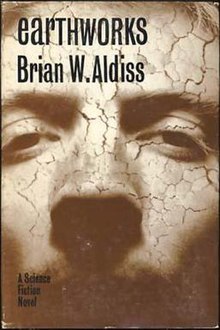| This article needs additional citations for verification. Please help improve this article by adding citations to reliable sources. Unsourced material may be challenged and removed. Find sources: "Earthworks" novel – news · newspapers · books · scholar · JSTOR (April 2022) (Learn how and when to remove this message) |
 Cover of first edition (hardcover) Cover of first edition (hardcover) | |
| Author | Brian Aldiss |
|---|---|
| Language | English |
| Genre | Science fiction |
| Publisher | Faber & Faber |
| Publication date | 1965 |
| Publication place | United Kingdom |
| Media type | Print (Hardcover & Paperback) |
| Pages | 155 |
Earthworks is a 1965 dystopian science fiction novel by British science fiction author Brian Aldiss. The novel draws its premise from prevalent fears about population growth and overcrowding of the Earth.
Plot introduction
The novel is set in a world of environmental catastrophe and extreme socio-economic inequality. Outside crowded cities controlled by a police state, a class of wealthy and powerful "Farmers" exploit a rural prison labour population and hunt down subversive "Travellers" who have broken free of social controls.
Cultural impact
In 1967, the artist Robert Smithson took a copy of Earthworks with him on a trip to the Passaic River in New Jersey (where he created The Monuments of Passaic, 1967). He reused the title to describe some of his works, based on natural materials like earth and rocks, and infused with his ideas about entropy and environmental catastrophe.
References
- Hickman, John (2009). "When science fiction writers used fictional drugs: rise and fall of the twentieth-century drug dystopia". Utopian Studies. 20 (1): 141.
- Tiberghien, Gilles (1995). Land Art. Princeton Architectural Press. p. 18. ISBN 1-56898-040-X.
External links
- Earthworks on Brian Aldiss's official site
- Earthworks title listing at the Internet Speculative Fiction Database
This article about a 1960s science fiction novel is a stub. You can help Misplaced Pages by expanding it. See guidelines for writing about novels. Further suggestions might be found on the article's talk page. |